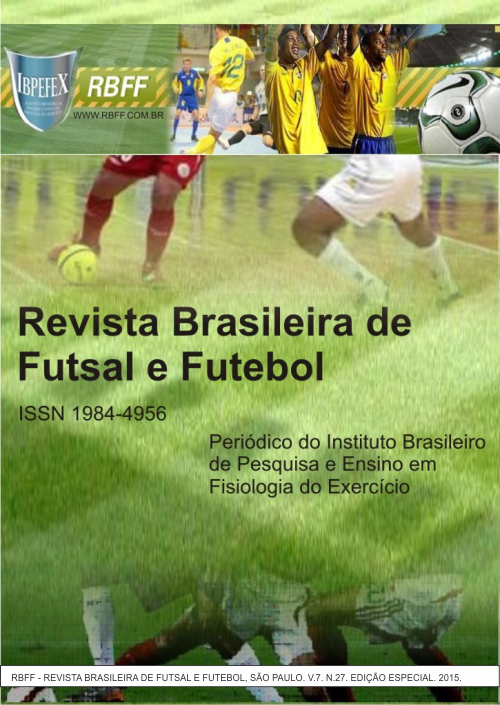Development of intelligence bodily kinesthetic through mode capoeira in the first year of high school
Abstract
Introduction: For the present study Capoeira was used, a disguised fight and dance developed in game shape, as a tool for developing Bodily Kinesthetic Intelligence. Aim: In order to verify the change of the intelligence of high school students during the School Physical Education classes in private educational institution. Materials and Methods: Therefore three self-assessments were administered by means of a closed questionnaire, in the following order: the end of the first class, the fourth class, and the eighth class. To verify this change, we used the Scale of Subjective Perception of Learning developed by Barros (in publishing). Result and Discussion: After the questionnaire, there was a small development of Bodily Kinesthetic Intelligence. The feeling should reflect how he was able to understand, relate and perform the exercise with the knowledge gained by combining the sensations of coordinative abilities; motor coordination and balance. With no concern for the variables of capacity constraints, no learning occurs before the motor action. Although it is a subjective measure, the scale of learning reveals a very good estimate of the understanding of the contents. Conclusion: However, studies related to Multiple Intelligences are little discussed in the literature, especially when considered from the quantitative method. Soon we expect this study to awaken more quantitative research on the relationship between Capoeira and Multiple Intelligences.
References
-Barros, K. F. Capoeira na Educação Infantil: Teoria de Ensino e Atividades Práticas. São Paulo. Phorte. 2012.
-Barros, K. F. (em publicação). Saúde na Escola: Intervenções pedagógicas para a aquisição de um estilo de vida saudável.
-Brasil. Parâmetros Curriculares Nacionais. v. 7 educação física, Secretaria de Educação Fundamental. Brasília. MEC.1998.
-Brasil. Cadernos da TV Escola: Múltiplas Inteligências na Pratica Escolar. Secretaria de Educação a Distância. Brasília. MEC. 1999.
-Brasil. Lei n ̊ 10.639 de 09 de janeiro de 2003. Disponível em: http://www.planalto.gov.br/ccivil/LEIS/2003/L10.639.htm Acesso: 03/07/2014.
-Fonseca, J. S.; Viana, H. B.; Galatti, L. R. Rangel, N. B. C. Inteligências Múltiplas e a capoeira. EFDeportes.com, Revista Digital. Buenos Aires. Año 17. Núm. 171. 2012.
-Gardner, H. Estruturas da Mente: A Teoria das Inteligências Múltiplas. Porto Alegre. Artes Médicas Sul. 1994.
-Instituto Do Patrimônio Histórico E Artístico Nacional. Capoeira se torna patrimônio cultural brasileiro. Disponível em: < http://portal.iphan.gov.br/portal/montarDetalheConteudo.do?id=13983&sigla=Noticia&retorno=detalheNoticia> Acesso em 02/07/2014.
-Manhães, F. C.; Souza, C. H. M.A estimulação da inteligência corporal cinestésica no desenvolvimento psicomotor na prática da Educação Física escolar.EFDeportes.com, Revista Digital. Buenos Aires. Año 13. Núm. 124. 2008.
Authors who publish in this journal agree to the following terms:
- Authors retain the copyright and grant the journal the right of first publication, with work simultaneously licensed under the Creative Commons Attribution License BY-NC which allows the sharing of the work with acknowledgment of the authorship of the work and initial publication in this journal.
- Authors are authorized to enter into additional contracts separately for non-exclusive distribution of the version of the work published in this journal (eg, publishing in institutional repository or book chapter), with acknowledgment of authorship and initial publication in this journal.
- Authors are allowed and encouraged to post and distribute their work online (eg, in institutional repositories or on their personal page) at any point before or during the editorial process, as this can bring about productive change as well as increase impact and impact. citation of published work (See The Effect of Free Access).





